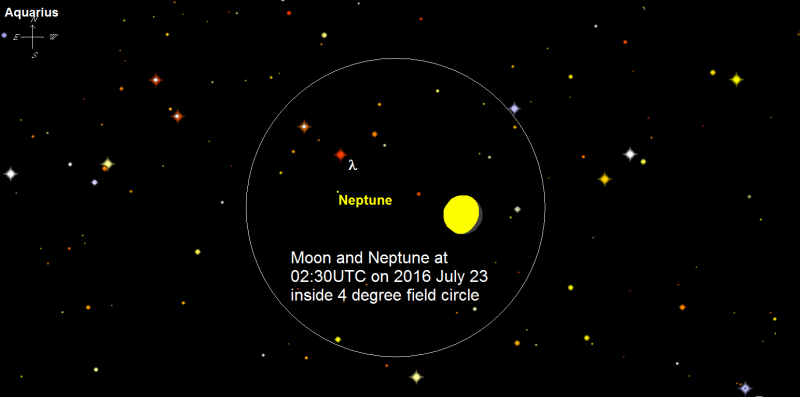2016 July 16
A binocular Neptune in the morning sky
Since the demotion of Pluto to a dwarf planet in 2006, Neptune has become the outermost planet of our solar system. It reaches opposition this year on Sept. 2 when it will be visible for much of the night. However, if you’d like to get a viewing of it earlier than that then next weekend provides an ideal opportunity. Neptune is usually an easy binocular object and the problem is not seeing it but locating it amongst the background stars. What is needed is a marker to point the way and on July 23 there is one – the Moon!
From London on the morning of Saturday July 23 the waning gibbous Moon (87% phase) transits the meridian at 02:43UTC (03:43BST) at an altitude of 30 degrees. Neptune transits 6 minutes later at a similar altitude. The chart below shows the position of the Moon and Neptune at 02:30UTC on this date, along with some background stars to act as a guide. Neptune, at magnitude 7.8, lies just under 1.5 degrees east north-east of the Moon at this time and also 0.5 degrees due south of magnitude 3.7 lambda Aquarii.
Neptune will not appear to move relative to lambda but the Moon will. Closest approach occurs at 06:15UTC with Neptune just a few arcminutes south of the Moon’s limb, but obviously then in a bright sunlit morning sky. So, if you want to track down Neptune, you will either have to get up very early or go to bed very late – but it is a Saturday.

| The British Astronomical Association supports amateur astronomers around the UK and the rest of the world. Find out more about the BAA or join us. |
